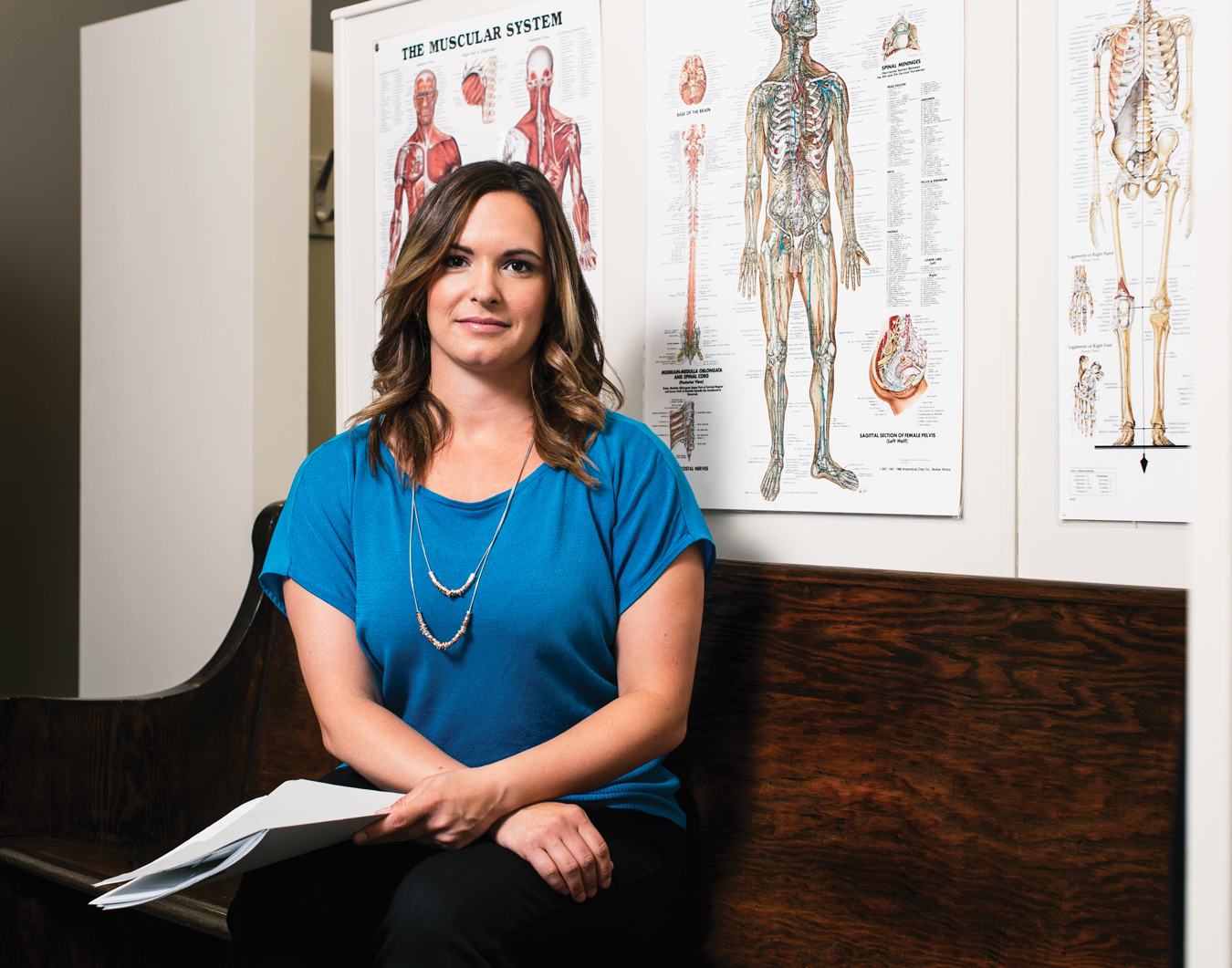WHO: Dr. Melissa Gallant
AGE: 28
JOB: Chiropractor
EXPERIENCE: When Dr. Melissa Gallant started her summer job at Whitemud Crossing Chiropractors in May 2008, she’d never even been to a chiropractor before. Gallant was in her third year of a nutrition program at the University of Alberta with her sights set on becoming a registered dietitian.
“As I worked there and learned about chiropractic, and saw how much it changed patients’ lives, I decided that was what I wanted to do with the rest of my life,” Gallant says.
Schooling can be intense for a chiropractor, with a minimum of seven years of training and a year-long internship. Once Gallant had met her prerequisites at the U of A, she moved to Dallas for a comprehensive chiropractic program. From there, she went to Ecatepec de Moreles, Mexico, for three months of her internship. She also earned a bachelor of science degree in nutrition along the way.
“Learning to adjust for the first time was one of the things that scared me the most,” she confesses. “It takes a lot of practice and encouragement from fellow classmates.”
Coming back home to Edmonton to practise was Gallant’s first choice.
“I enjoy helping people,” Gallant says. “Hearing how chiropractic can return people to their lives, doing what they love to do – whether it be a sport or activity, gardening or simply being able to pick up their grandkids with no pain. It makes it all worth it.”
“Chiropractic focuses on how the body works as a whole. We experience our lives through our nervous system, so chiropractors look to ensure this system works the best it can. Chiropractors assess the biomechanical function as controlled by the neurological system. When the body isn’t working well, we perform specific chiropractic adjustments. This optimizes how the body can function and adapt to the world around us.
“The most common complaints I tend to see are lower back pain and/or neck and shoulder pain. The biggest cause of low back pain, as well as neck and shoulder pain, tends to be an imbalance between a person’s capacity for stress and strain and the stress we put on ourselves with sitting, lifting, stress and much more.
